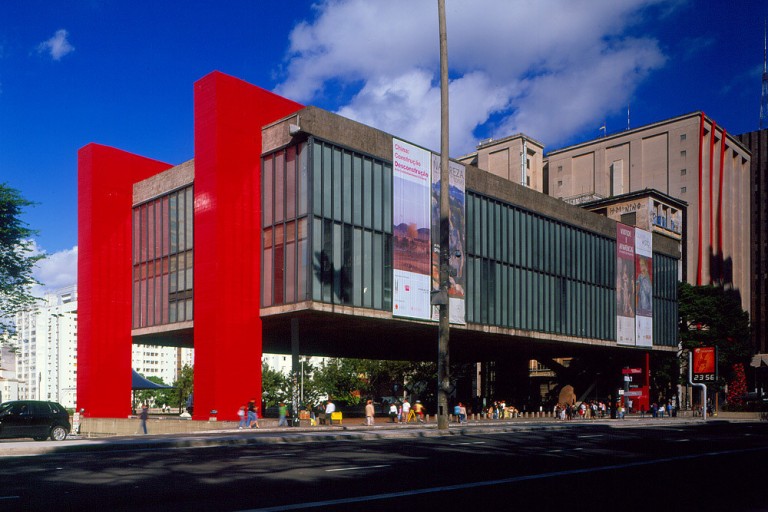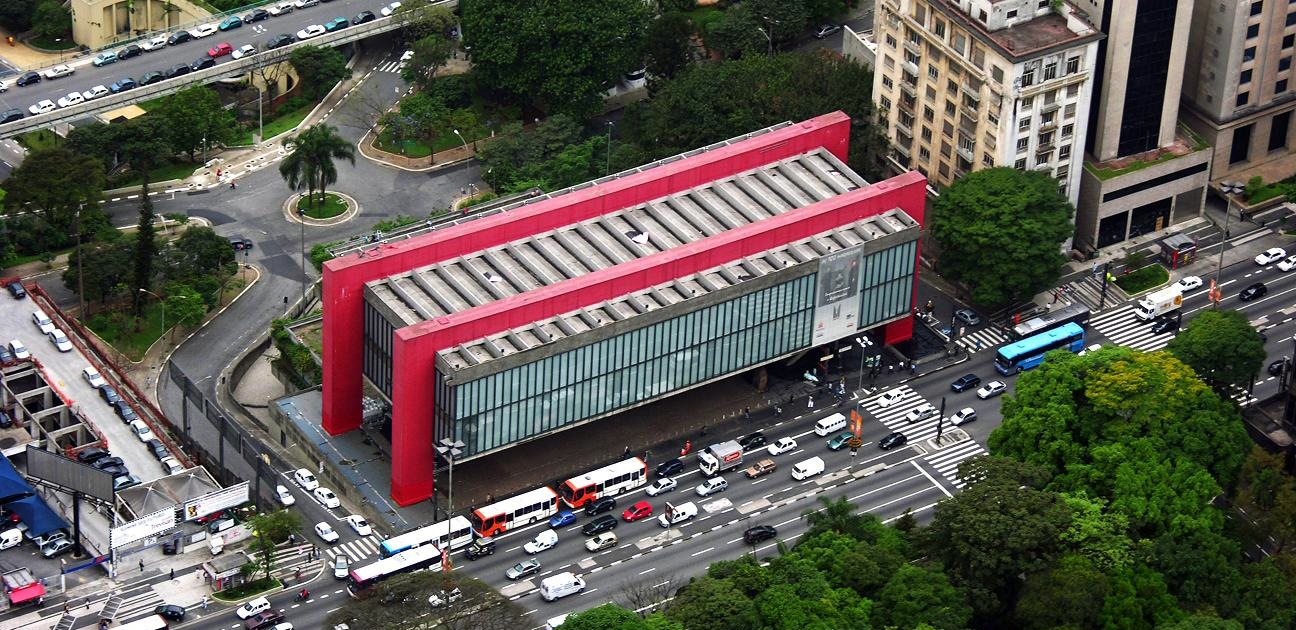Featured Image [1]
One of the most challenging aspects of each design is to form it in a way that can represent its character and yet be in harmony with the soundings. The author, Jamaal Harris describes Bo Brandi’s great job in implementing this concept by explaining how she incorporated both aspects in one design. Designing a suspended structure for the building, Bo Brandi helped the museum to stand out from nearby buildings which, by itself, attracts people and yet keeps the character of the street.
– Editor: Elaheh Houshmandipanah
The Friendly Neighborhood Museum
March 12, 2019
Author: Jamaal Harris
Sao Paulo Museum of Art, by Linda Bo Brandi, is open for interpretation. It is Spiderman, as it hangs above the street, saving the streetscape from the ubiquity most others suffer from. There it hangs, you can see right through it, yet it is impossible to ignore. The juxtaposition is strong, as the tension between modern and brutalist elements creates this aura of suspense. You feel the weight of the building from blocks away, yet there is a certain airiness to the project. Bo Brandi empowered the negative space and allowed for these spaces themselves to be open to interpretation to the public.

Sao Paulo Museum of Art[2]
Situated on the corner lot, this building is the highlight of the street. Upon approach from the street, the profile of the building does not necessarily stand out. Juxtaposition rears its prominent head when evaluating the overall form. The cultivated glazing around the main gallery massing and open floor plan are strong influences from the International Style and contribute to the perceived lightness of the building. Meanwhile, the structural system and colossal concrete pillars contributed from the brutalist movement, become emphasized contradictions in the project, by painting the structural skeleton bright red, thinning out the floors, and stretching the vertical elements of the facade. This creates an interesting dialogue, not only between these two elements but also between the building and the surrounding context. The neighboring buildings tower over Sao Paulo, yet none of them truly pull your eyes toward the sky quite like Sao Paulo. Also, each building surrounding has an identifiable style, and they fit in with each other, in terms of scale and form. Meanwhile, Sao Paulo distinguishes itself from the others, as it is the only one that blends styles into one composition. Even though you want to question the placement of the project, I can see this space without it now.
To answer the question of who this building is for, you must look at how space is used. During the day, you can see the bald man wiping his sweat off as he catches his breath in the shade, the couple enjoying their lunch break together, the occasional homeless man taking a nap, possibly a street vendor selling local trinkets. And on a different day, see something completely different, maybe nothing at all. These moments define the human experience, can’t be manufactured solely through architecture, so wisely, Bo Brandi didn’t try to force an overall mood or vibe. Rather, she saw her role as an architect was to design for the populous, and, through design, sought to embrace the notion that a museum could both showcase culture and serve that said culture. Her design choice is catered to the inhabitant, and just gave them the space they needed and let them use it how they see fit. This theme is continued in the interior, where the open floor plan is once again open for interpretation. Once released from the elevator, you enter an arrayed field of suspended artworks and must weave through the artwork, each circulation path different. Typically, in a museum, you go through a staged experience, where you see the artwork in sequences. But, with Sao Paulo, the lack of a clear sense of progression, enhances the displayed artwork. To quote Roger M. Buergel, “each artwork was shown to be its own site, a display mode that attested both to the migratory destiny of the pieces, but also, and more importantly, to a lack of institutional framing”[3]. Each artwork emulated the spirit of the building: floating. Grounded by heavy concrete blocks, works were mounted on glass, which strengthened the unimpeded pandemonium of the gallery.
References
[1] Museum Profile, https://www.museeum.com/museum/sao-paolo-museum-of-art/, (accessed March 12, 2019)
[2] Kok, Pedro, No title, https://www.archdaily.com/537063/ad-classics-sao-paulo-museum-of-art-masp-lina-bo-bardi, (accessed March 12, 2019)
[3] Buergel, Roger M. “‘This Exhibition Is an Accusation’: The Grammar of Display According to Lina Bo Bardi.” Afterall: A Journal of Art, Context and Enquiry26 (2011): 51-57.
[4] Langdon, David, AD Classics: Sao Paulo Museum of Arts (MASP)/ Lina Bo Brandi, https://www.archdaily.com/537063/ad-classics-sao-paulo-museum-of-art-masp-lina-bo-bardi, (accessed 12 March 2019)
